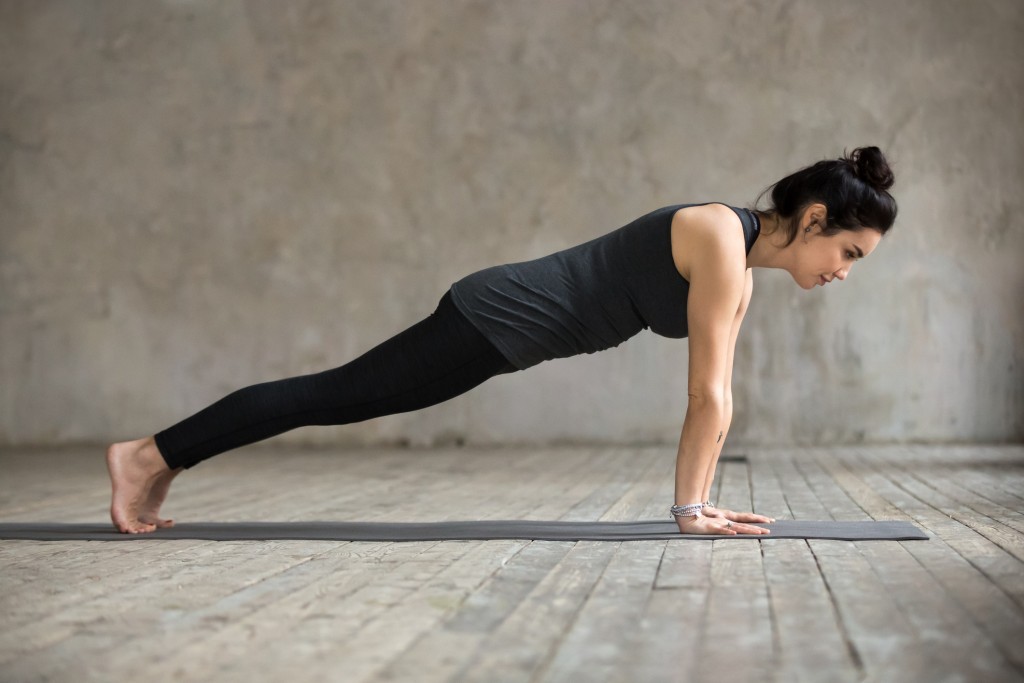
Exploring Plank
How did you feel when you saw the subject of this message? Did you say Ahhhh, I LOVE plank pose? If you asked 100 people what is their favorite yoga pose plank would be the favorite of only a few. I may not be able to convince you that it should be number one on your list but I want to share a few unexpected reasons it might be worth bumping it up a few places on your list and giving it more time in your yoga practice.
Variations
Yes, plank pose is challenging. It takes not only physical strength but also mental concentration. You need all the alignment that you have in mountain pose but now you have engaged your friend gravity as you are repositioned in this new horizontal orientation. (Yes, gravity is your friend!)
In plank pose I think about stretching out through the crown of my head and pressing my heels away and this helps me find length in the pose. The navel draws back to the spine and this also helps lengthen the tailbone toward the feet. The low back muscles must engage here to keep the belly from dropping.
If this feels too challenging, then knee plank is the way to go. It’s mountain pose, on your knees, in a horizontal position. You can do this! All the same alignments… just go slow and buildup to more time.
Another variation is to plank at a wall or with your hands on a table. The way to adjust the difficulty of this is how far your feet are away from the wall or the table- the closer they are, the easier it is. Step back and it gets more challenging. These variations are awesome to stretch the calf muscles and you can play around and really feel the foot position as you keep your heels on the floor or lift up to your toes.
In addition, you can play here and get some awesome tricep work in. Make sure the eye (this is the crease of your elbow) is pointing up toward the sky. Then as you bend the elbow imagine they are just folding close to your side, like little grasshopper legs. Slow movement is key here. As you hold the muscles in tension, this is work to build strength. Slow holding also allows you to stay connected to your breath.
In all of these variations the core muscles, the one as the front side and back are engaging. The low back muscles in particular are often the weakest and need this work. Keep the tail bone reaching for the space in between your feet, wherever your feet are, for good alignment.
The other challenge in plank pose is on the wrists. Here you have the opportunity to strengthen the wrists. Sometime yoga beginners find the weight bearing on the wrists to be too strenuous. Plank pose on your knees may be a better place to begin for you. Or fist plank is another option or hands on a table or other surface or forearm plank. Check out a few options in this great article. Taking it slow is the best way to build wrist strength and this will come in handy for many other poses.
So are you ready to explore plank? Adriene is here to help.
Keep it light, playful and stay curious. Enjoy!

Leave a Comment